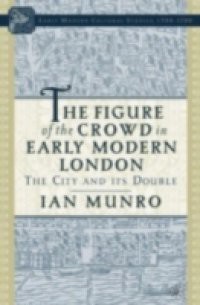This book examines the cultural phenomenon of the urban crowd in the context of early modern London's population crisis. Munro explores the crowd's double function as a symbol of the city's growth and as the necessary context for the public performance of urban culture. Its central argument is that the figure of the crowd acts as a supplement to the symbolic space of the city, at once providing a tangible referent for urban meaning and threatening the legibility of that meaning through its motive force and uncontrollable energy.

